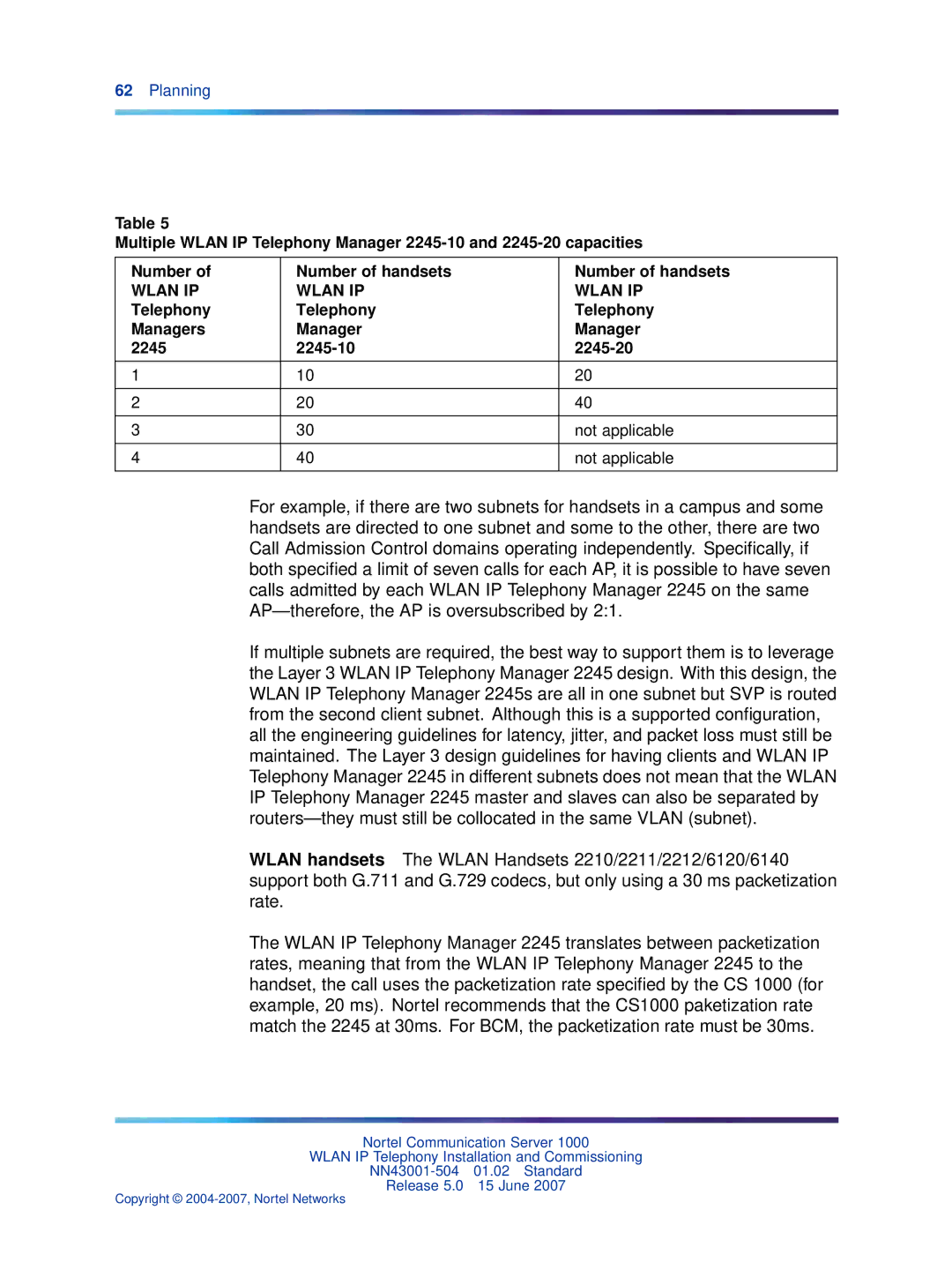
62Planning
Table 5
Multiple WLAN IP Telephony Manager
Number of | Number of handsets | Number of handsets |
WLAN IP | WLAN IP | WLAN IP |
Telephony | Telephony | Telephony |
Managers | Manager | Manager |
2245 |
|
|
|
|
|
1 | 10 | 20 |
|
|
|
2 | 20 | 40 |
|
|
|
3 | 30 | not applicable |
|
|
|
4 | 40 | not applicable |
|
|
|
For example, if there are two subnets for handsets in a campus and some handsets are directed to one subnet and some to the other, there are two Call Admission Control domains operating independently. Specifically, if both specified a limit of seven calls for each AP, it is possible to have seven calls admitted by each WLAN IP Telephony Manager 2245 on the same
If multiple subnets are required, the best way to support them is to leverage the Layer 3 WLAN IP Telephony Manager 2245 design. With this design, the WLAN IP Telephony Manager 2245s are all in one subnet but SVP is routed from the second client subnet. Although this is a supported configuration, all the engineering guidelines for latency, jitter, and packet loss must still be maintained. The Layer 3 design guidelines for having clients and WLAN IP Telephony Manager 2245 in different subnets does not mean that the WLAN IP Telephony Manager 2245 master and slaves can also be separated by
WLAN handsets The WLAN Handsets 2210/2211/2212/6120/6140 support both G.711 and G.729 codecs, but only using a 30 ms packetization rate.
The WLAN IP Telephony Manager 2245 translates between packetization rates, meaning that from the WLAN IP Telephony Manager 2245 to the handset, the call uses the packetization rate specified by the CS 1000 (for example, 20 ms). Nortel recommends that the CS1000 paketization rate match the 2245 at 30ms. For BCM, the packetization rate must be 30ms.
Nortel Communication Server 1000
WLAN IP Telephony Installation and Commissioning
Release 5.0 15 June 2007
